Abstract
The paper describes methodology for doing nutrition surveys among deprived population groups of grossly homogeneous socioeconomic status so as to identify those families in which a child between age six months and five years falls in the upper 25 per cent in height and weight measurements. These families are labeled as being "Positive Deviants" from the undernutrition that prevails in the population. They are then studied anthropologically to uncover any practices related to food sources, storage, preparation, consumption, and content. The information would be used in designing food supplementation or other nutritional promotion in the population at large on the assumption that the observed "favorable" practices, although atypical, are feasible and culturally acceptable because they are indigenously rather than extraneously derived. In addition, the survey collected data on fertility because of findings concerning the close interrelatedness among a woman's nutritional state, her age when first giving birth, intervals between births, and the growth and development of her young children. Severe undernutrition raised a woman's safe age threshold for first birth above 20 years and a reasonably safe birth interval to more than three years.
Full text
PDF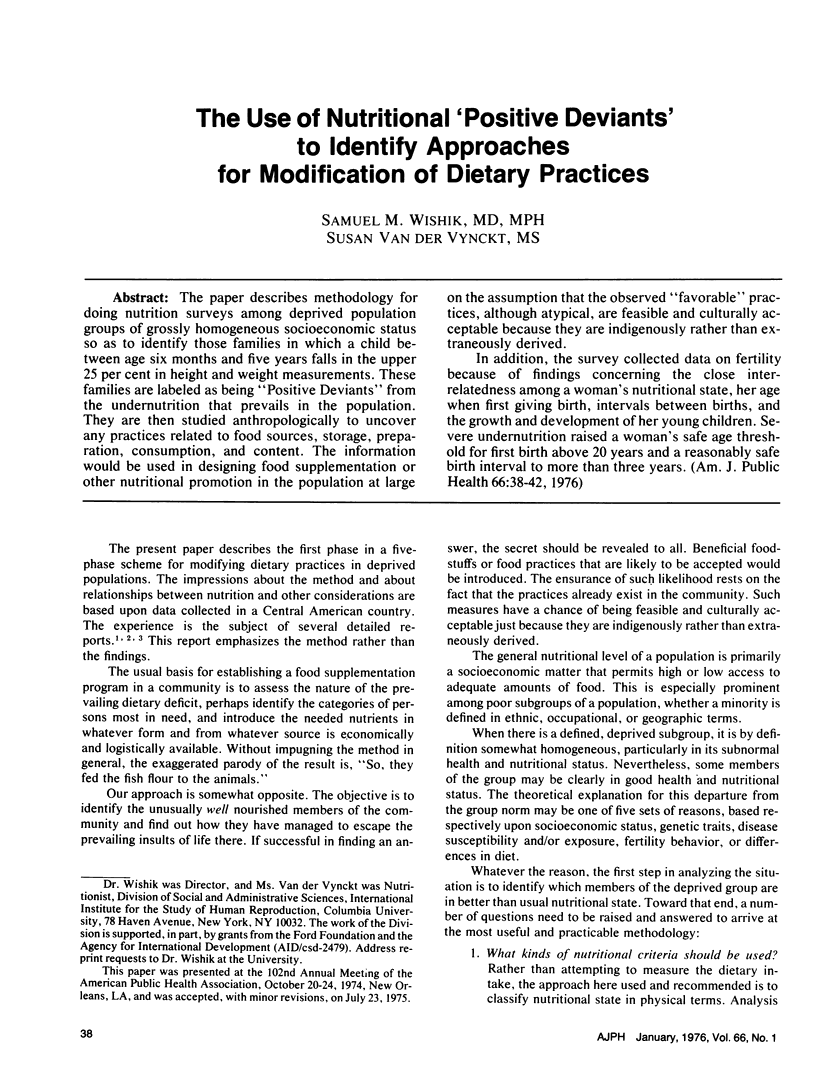
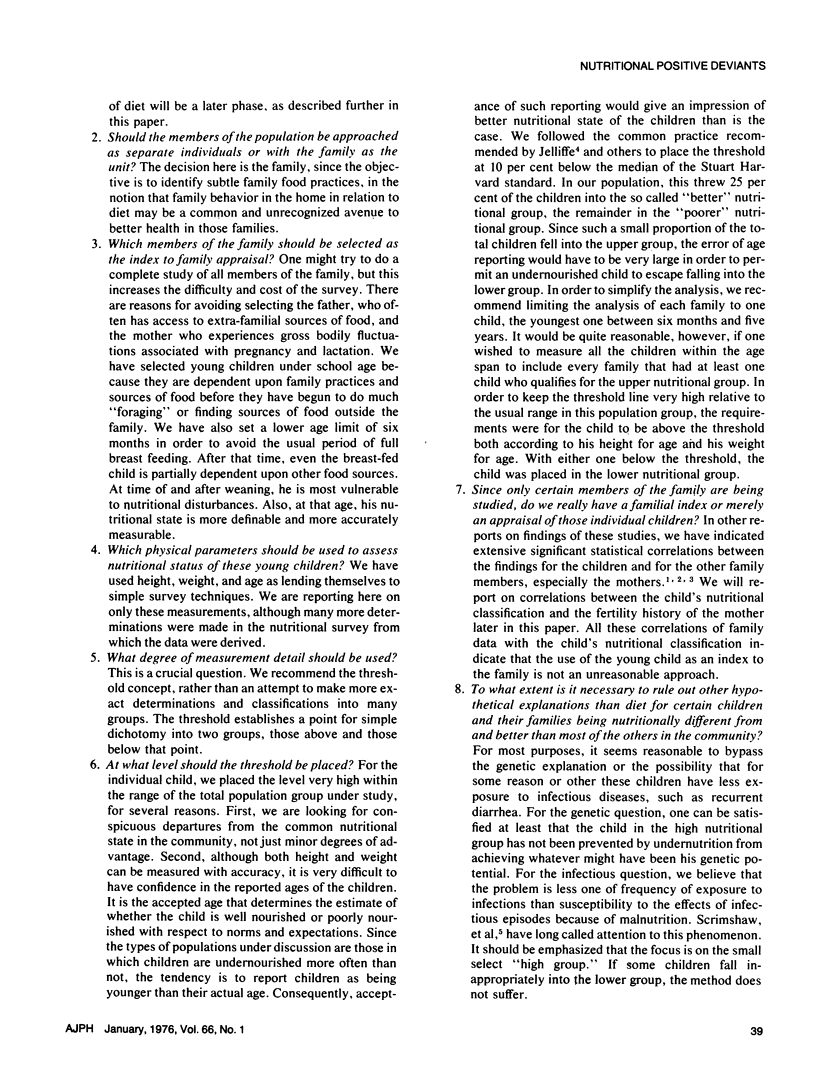
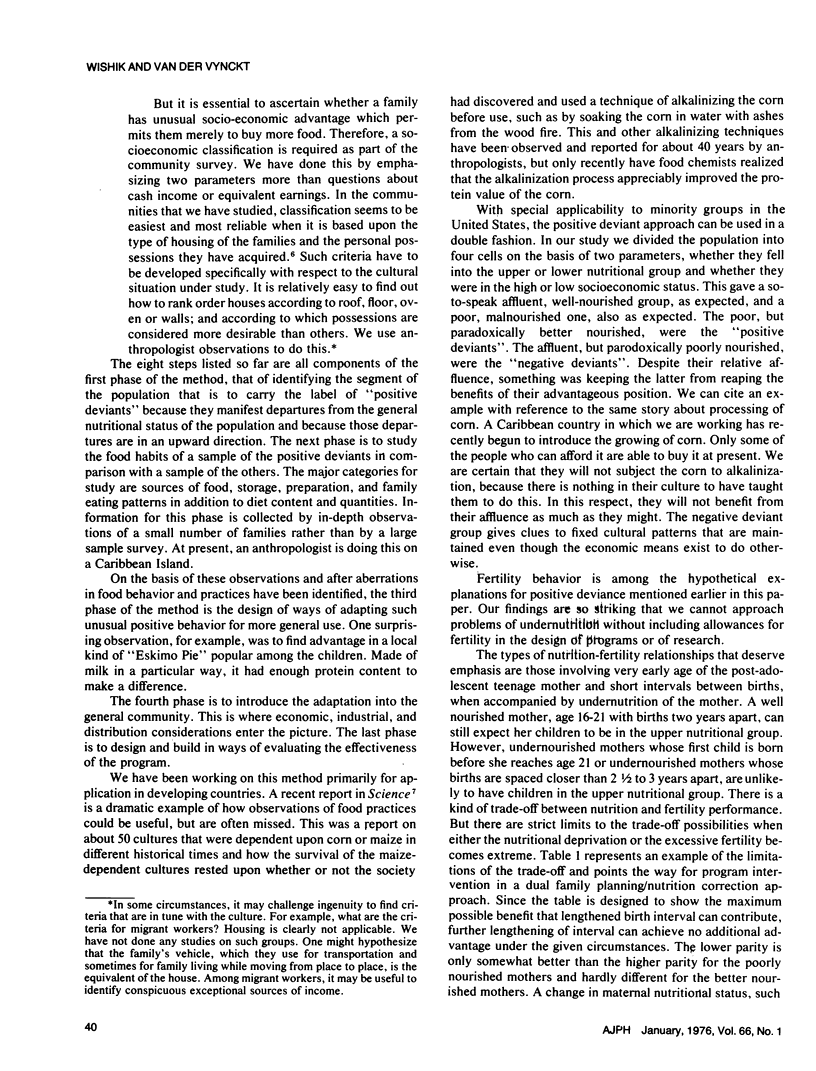
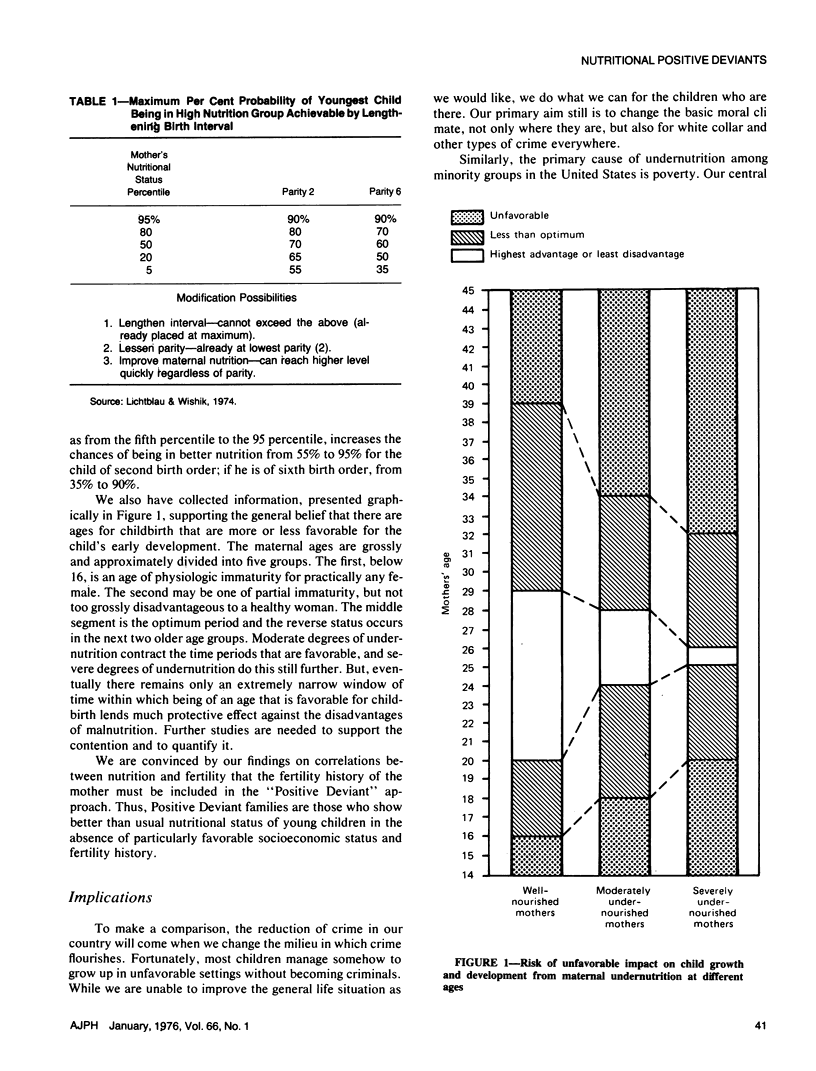
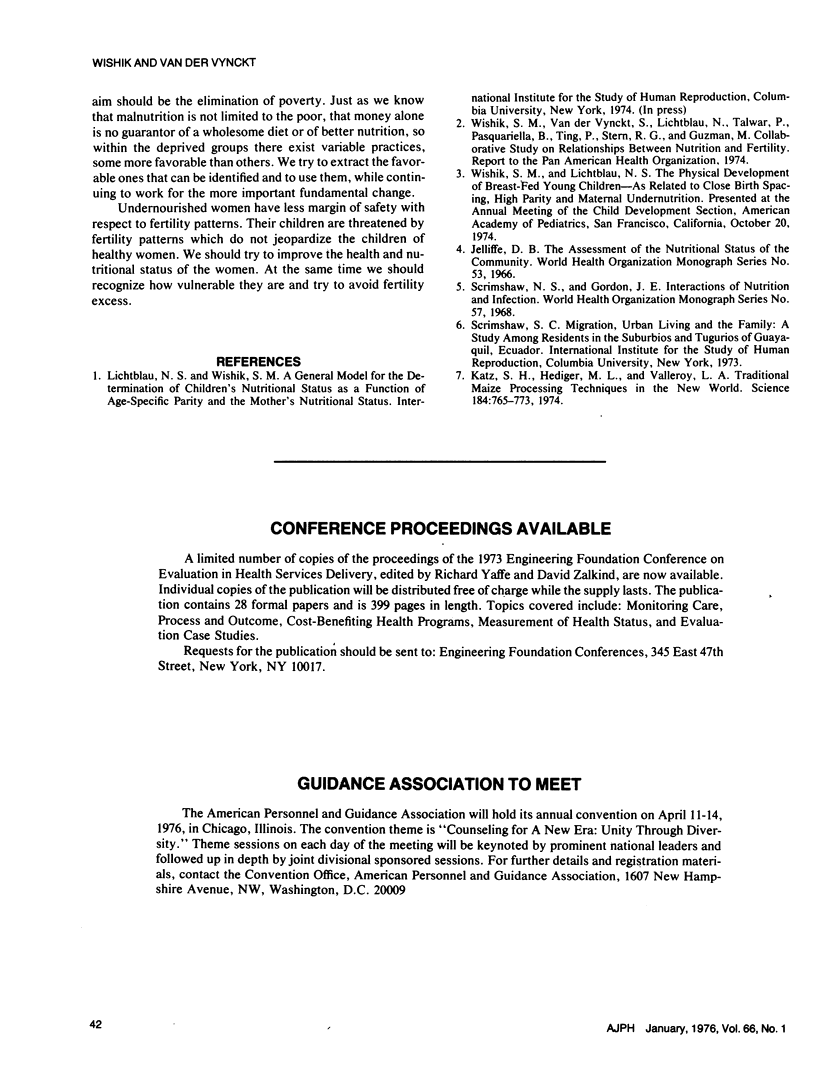
Selected References
These references are in PubMed. This may not be the complete list of references from this article.
- Katz S. H., Hediger M. L., Valleroy L. A. Traditional maize processing techniques in the new world. Science. 1974 May 17;184(4138):765–773. doi: 10.1126/science.184.4138.765. [DOI] [PubMed] [Google Scholar]


